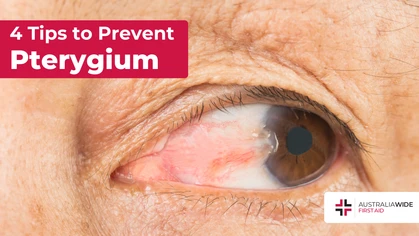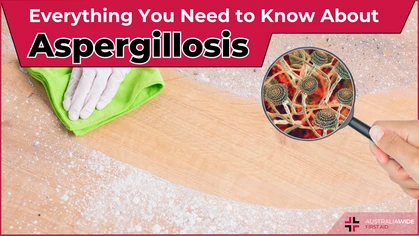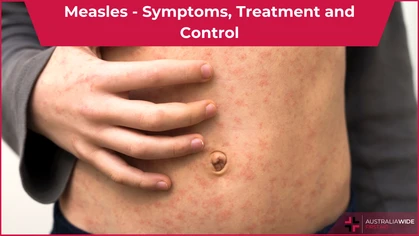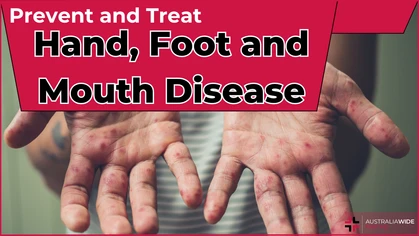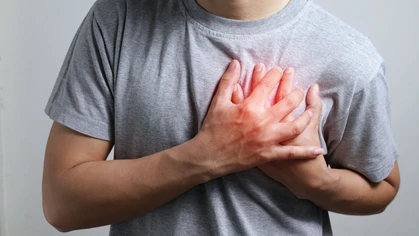Types of Heart Disease

Disease
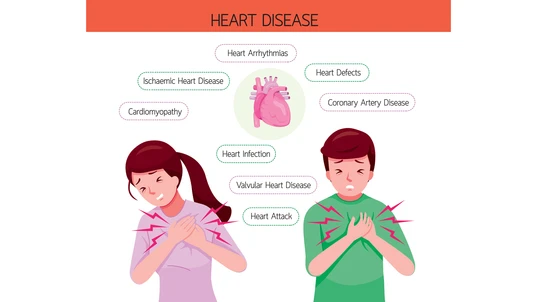
Types of heart disease
Heart disease includes conditions that lead to dangerous ischaemic conditions, such as atherosclerosis. Other heart diseases, such as arrhythmias, can be managed relatively easily. Many health issues and various types of disease can afflict the heart. It's a complex organ and can be compromised by congenital conditions a person is born with. Heart diseases can result from lifestyle choices or from drugs used in treating disease or that have been used unadvisedly.Arrhythmia
Arrhythmia is when the heart stops beating in a regular rhythm or beats too fast or too slow — normal heart rate is around 60–100 beats per minute. Arrhythmias occur due to malfunctions in the heart’s electrical system. Electrical shock, or drugs, are triggers. Without an external trigger, it’s unlikely for a person with a normal, healthy heart, to develop a deadly arrhythmia. Arrhythmias are more likely to develop in a diseased or deformed heart, in which the electrical signals may be faulty. Common causes of arrhythmias or conditions that can lead to arrhythmias include:- Congenital heart defects
- Coronary artery disease
- Diabetes
- Drug abuse
- Excessive alcohol or caffeine
- High blood pressure
- Smoking
- Some medications, dietary supplements, herbal remedies
- Stress
- Valvular heart disease
Arrhythmia symptoms
- Heartbeats are skipped
- Rapid heartbeat or pounding in the chest
- Occasional extra heartbeats
Some arrhythmias occur in healthy hearts and may not be serious. Other arrhythmias need medical treatment.
Terms associated with arrhythmia
Tachycardia is when the heart beats too quickly, typically more than 100 beats a minute. Bradycardia is when the heart beats too slowly, typically less than 50 beats s minute. Atrial Fibrillation is one type of abnormal heart rhythm, in which the upper chambers of the heart beat rapidly and out of sync with the heart’s lower chambers. This irregular heart rhythm can reduce the ability of the heart to pump blood efficiently. Supraventricular tachycardia (SVT) is an abnormally fast or erratic heartbeat affecting the heart’s upper chambers. During an episode of SVT, the heart can beat 150 to 220 times a minute, occasionally faster or slower. Many people with supraventricular tachycardia live healthy lives with no treatments or restrictions. Others may need lifestyle changes, medications and/or heart procedures to manage the rapid heartbeats and related symptoms. Become familiar with your heart’s regular rhythm by checking your pulse for 30 seconds at various times of the day, including before and after various activities. Taking your pulse first thing in the morning when you wake, and just before bedtime at night, will help determine your baseline rhythm. It’s normal for your pulse to vary throughout the day and after physical activities. When checking your pulse, count for 30 seconds then multiply by 2 to get your heart rate in beats per minute. If you notice irregular rhythm, count for 60 seconds rather than 30 and multiplying. If your heart rate is persistently above 120 bpm or below 40 bpm and/or if the rhythm is irregular, too fast, too slow, see your doctor. If arrhythmia is diagnosed, your doctor will be able to explain your particular arrhythmia in detail and answer any questions you may have, including its cause and treatment.Atherosclerosis
Atherosclerosis is the cause of most heart attacks and strokes. The condition is caused by fats, such as cholesterol and other substances, building up on artery walls. These deposits eventually become plaques that narrow or block arteries. Plaques can also rupture and cause a blood clot. Atherosclerosis can lead to: Angina – pain or discomfort in the chest when the heart muscle isn’t getting enough blood. Heart attack – when blood supply to the heart is cut off after the artery is completely blocked by a blood clot resulting from the fatty material breaking down. Stroke – is when there’s insufficient blood supply to the brain. A short term episode can cause a mini-stroke (TIA). There are also cases where the artery is completely blocked by a blood clot after break down of fatty material. Peripheral arterial disease (PAD) – when blood supply to the leg muscles is insufficient, typically causing pain in the calves, hips, buttocks and thighs, when walking or exercising.Symptoms of atherosclerosis
Symptoms do not become apparent until an angina or heart attack occurs. Regular health checks can monitor your risk of a heart attack, especially if you’re over 40. Based on the results, your doctor can advise you on how to keep your heart healthy.Angina
Angina is chest pain or discomfort when blood and oxygen to the heart is insufficient, caused by narrowing of the coronary arteries.Symptoms of angina
Discomfort is noticed typically during physical activity or when experiencing strong emotions. However, the sensation can differ for each individual with symptoms such as:- A squeezing or choking sensation
- Dull pain, tightness, or heaviness at the centre of the chest
- Neck or jaw discomfort
- Pain in shoulders and/or arms
- Shortness of breath
Less common symptoms:
- Fainting
- Heartburn-like sensation
- Pain through chest to back
- Sweating
If you experience angina, cease physical activity. Take angina medications if you have been prescribed them. Contact your doctor for a review. Treat it as a heart attack if symptoms fail to stop after 15 minutes. Call 000 for an ambulance.
Atrial Fibrillation
Atrial fibrillation is a common condition that makes the heart beat irregularly, often too fast. In atrial fibrillation (a.k.a. AF or Afib), abnormal electrical activity causes the heart’s two top chambers (atria) to twitch rather than contract. This twitching is rapid and out of rhythm with the heart’s two lower chambers (ventricles). As a result of this fibrillation of the atria, the ventricles have less time to fill with blood and the heart’s ability to pump blood properly is compromised. Afib increases the risk of heart-related complications, including heart failure and stroke. It also increases the chance of blood clots forming in your heart and travelling further.Signs and symptoms of atrial fibrillation
- Chest pain sometimes
- Dizziness
- Palpitations
- Shortness of breath
Although it can cause symptoms, such as fast, pounding heartbeat, breathlessness and weakness, as listed above, many people notice no symptoms. Afib can come and go, or it may be persistent. Usually not life-threatening itself, Afib is nevertheless a serious medical condition that requires proper treatment to prevent stroke. Most people with atrial fibrillation have an underlying heart condition. This could be coronary heart disease, cardiomyopathy, hypertension (high blood pressure), rheumatic heart disease, valve disease, heart attack (myocardial infarction), or heart failure. It could also be caused by heart surgery.
Cardiac Arrest
Cardiac arrest is the abrupt loss of heart function when the heart’s electrical system malfunctions. This can happen to a person who may or may not have diagnosed heart disease. In cardiac arrest, death results when the heart suddenly stops working properly. This may be caused by abnormal, or irregular, heart rhythms (called arrhythmias). A cardiac arrest is an emergency. If you witness a cardiac arrest, call 000 immediately. Follow Call, Push, Shock. Push is CPR. Shock requires a defibrillator. Someone will need to fetch the nearest defibrillator. Assuming the person has not responded to CPR, it needs to be used to shock, without delay. Cardiac arrest is sometimes mistakenly called “heart attack”. It is not the same thing. Please see our article Cardiac Arrest vs Heart Attack.Cardiomyopathy
Cardiomyopathy is a disease of the heart muscle, causing it to thicken or enlarge. In most cases, the heart muscle becomes weaker and less effective. When it cannot pump enough blood to meet the body’s needs, it’s called heart failure. Dilated cardiomyopathy (also known as congestive heart failure or CHF) is the most common of the 3 major types of cardiomyopathy. The damaged heart muscle typically becomes enlarged and less effective. Fluid builds up in the lungs and often in the abdomen and ankles. Heart failure is probable. The cause of dilated cardiomyopathy is not known but could possibly result from damage following a heart attack, infection, toxins, and drugs, including cancer drugs. It may also be hereditary. Hypertrophic cardiomyopathy can develop as a result of high blood pressure or ageing but is usually hereditary. This disorder causes muscle cells in the ventricles to thicken, placing strain on the heart and leading to problems pumping enough blood through the body. Restrictive cardiomyopathy is the least common type of cardiomyopathy. It is indicated by a loss of elasticity in the heart muscle. This stiffening of the tissues means the heart cannot fill as it should. Blood backs up in the lungs and swelling occurs, making it harder to breathe. The cause is thought to be either a build-up of abnormal proteins (amyloidosis), scar tissue following a heart transplant, or diseases, such as connective tissue disorders.Symptoms of cardiomyopathy
Treatment
Cardiomyopathy may not be completely curable but it can be managed by treatments such as medication, pacemakers, and implantable defibrillators.Coronary Heart Disease
Coronary Heart Disease (also known as Coronary Artery Disease) is a narrowing of blood vessels that supply the heart muscle with oxygen and nutrients.
A process called atherosclerosis causes a build-up of substances, such as cholesterol, in the arteries. The heart is then required to work because harder to pump blood. Despite people living with atherosclerosis for years without symptoms, it is common to most cardiovascular diseases. And as the build-up increases, it can lead to serious complications, including:- Angina – chest pain or discomfort
- Coronary thrombosis (aka coronary occlusion) where a blood clot forms in an artery & blocks the flow of blood
- Heart attack
Treatment
Coronary artery disease is treated in accordance with the severity of the symptoms and the blockages. Treatments include medication, stents, and coronary artery bypass.Heart infection
Heart infection, such as endocarditis, is a result of germs reaching the heart, including:- Bacteria
- Viruses
- Parasites
Endocarditis affects the inner lining of the heart chambers and heart valves (endocardium). Heart infection signs and symptoms can include:
- Changes in heart rhythm
- Dry or persistent cough
- Fever
- Shortness of breath
- Skin rashes or unusual spots
- Swelling in legs or abdomen
- Weakness or fatigue
Heart Attack
A heart attack occurs when an artery becomes completely blocked, causing the heart muscle to become oxygen starved.Symptoms of heart attack
Heart attack symptoms are similar to those for angina and can include any or all of the following:- Dull pain, chest tightness, or discomfort – persistent, becoming more severe
- Fainting
- Flu-like symptoms
- Jaw & neck pain
- Nausea
- Pain from chest to back
- Pain in shoulder and/or arms
- Sensation similar to heartburn
- Severe pain that feels like ‘crushing’
- Squeezing or choking sensation
- Sudden difficulty breathing
- Sudden overwhelming fatigue or weakness
- Sweating
Call 000 for an ambulance immediately if any combination of these symptoms are experienced for more than a few minutes.
Heart Attack Action Plan
If you think someone is having a heart attack, waste no time. This is an emergency. Follow these steps:- Dial 000
- Ask for an ambulance *
- Report a possible heart attack
- Give the person aspirin if available, unless they’ve been advised not to take aspirin.
- Make sure the person rests quietly until the ambulance arrives.
* If an ambulance is not readily available, immediately call the person’s usual doctor, the nearest hospital, or health clinic for advice.
Heart Failure
Heart failure occurs when the heart cannot pump enough blood through the body. Common causes of heart failure are heart attack and high blood pressure, but there are many other causes. When the heart muscle fails to pump as efficiently as normal, the symptoms include:- Fatigue
- Shortness of breath
- Swelling in the ankles
- Weakness
A doctor should be consulted for some or all of these symptoms.
Heart Valve Disease (Valvular heart disease)
The heart has 4 valves — aortic, mitral, pulmonary, and tricuspid — that open and close to direct blood flow through your heart. Damaged heart valves can involve narrowing (stenosis), leaking (regurgitation or insufficiency), or improper closing (prolapse). Some people are born with valvular disease. The heart valves could also be damaged by conditions such as:- Rheumatic fever
- Infections (infectious endocarditis)
- Connective tissue disorders
Heart valve disease can affect any of the heart’s valves and cause it to be unable to do its job of ensuring that blood flows in the correct direction, without backing up or leaking.
Symptoms of heart valve disease
oedema) — are similar to those of congestive heart failure. Valvular heart disease signs and symptoms depend on which valve is not working properly, but can include:- Chest pain
- Dizziness or fainting (with aortic stenosis)
- Fatigue
- Fever (with bacterial endocarditis)
- Irregular heartbeat
- Palpitations, chest pain (may be mild)
- Rapid weight gain
- Shortness of breath
- Swollen feet or ankles
Leakage of blood is called regurgitation. Narrowing of the valve opening is called stenosis, and can also include regurgitation. Some people with a heart valve disorder may not have symptoms. If the heart valve disorder goes untreated, strokes, heart attacks, and blood clots could result.
Treatment
Although no treatment may be needed at the time, regular reviews by a doctor would likely be in order and certainly, a check-up if symptoms worsen. Treatment, either with medicines or surgery, depend on the cause of the valve problem and its effect on the heart.Hereditary heart conditions
Genetic risk factors for coronary artery disease can run in families. Many cardiac disorders — including arrhythmias, congenital heart disease, cardiomyopathy, and high blood cholesterol — can be inherited. Every aspect of the cardiovascular system is controlled by genes. Genetic variation (mutation), even in a single gene, can affect the probability of heart disease being an issue. When heart disease or a heart disorder is diagnosed, fellow family members are often encouraged to be screened for risk factors.Congenital heart defects
Congenital heart disease is an umbrella term for a range of heart abnormalities, including any type of malformation of the heart, heart valves, or major blood vessels that may or may not present at birth. Congenital defects are often diagnosed in infancy, or even before birth. Heart defects can develop in the womb, around a month after conception. Some congenital defects may not be diagnosed until much later. Some evade early detection, some develop as the heart’s structure changes with age. Congenital heart disease is the most common congenital disorder and leading cause of death in Australian new-borns. Yet for many babies, congenital heart disease needs no treatment or is corrected with surgery. Thanks to research, medical care and technology, survival rates for congenital heart disease have improved markedly. Around 80% congenital heart disease has no known cause. Known causes are attributed to gene or chromosome problems in the child, viral infections, such as rubella (German measles), in the mother during pregnancy, and alcohol or drug abuse during pregnancy. Heart defect signs and symptoms in children can include:- Cyanosis (bluish skin colour)
- Swelling in legs, abdomen, or around eyes
- In an infant, shortness of breath during feeding
Symptoms of less serious congenital heart defects may appear later in childhood or during adulthood. These include:
- Shortness of breath soon into exercise or activity
- Tiring quickly during exercise or activity
- Swelling in hands, ankles, feet
Catecholaminergic Polymorphic Ventricular Tachycardia (CPVT)
CPVT is a rare hereditary heart rhythm disturbance found in young people and children. This heart rhythm disturbance is due to proteins in the heart cells functioning abnormally and causing raised calcium levels. Symptoms of CPVT include blackouts, palpitations and dizziness, usually brought on by increased adrenaline after strenuous physical activity or heightened emotions. An ECG done while you exercise would reveal any abnormal heart rhythms. Genetic testing can also be done if your family has any history of CPVT, even if you have no symptoms of it. Doctors prescribe beta-blockers to regulate the heart rate and help prevent life-threatening arrhythmias. Restricted physical activity might also be in order. Around a third of affected people have an Implantable Cardioverter Defibrillator (ICD) fitted.Familial Hypocholesterolaemia
Familial hypercholesterolaemia (FH) is a genetic condition in which the blood has high levels of LDL cholesterol because the liver has been unable to remove it. The presence in the blood of so much of this bad type of cholesterol can lead to a build-up of fatty material in the arteries which could cause a heart attack. FH can be successfully treated but currently, there is no cure. Statins are often prescribed to reduce cholesterol levels. Doctors also advise getting plenty of exercise and maintaining both a healthy diet and a healthy weight.Disclaimer
This article is for informational purposes only. It does not constitute, replace, or qualify as any form of first aid training.
Originally published at
https://www.australiawidefirstaid.com.au/resources/types-of-heart-disease
as part of the Australia Wide First Aid Articles Library
